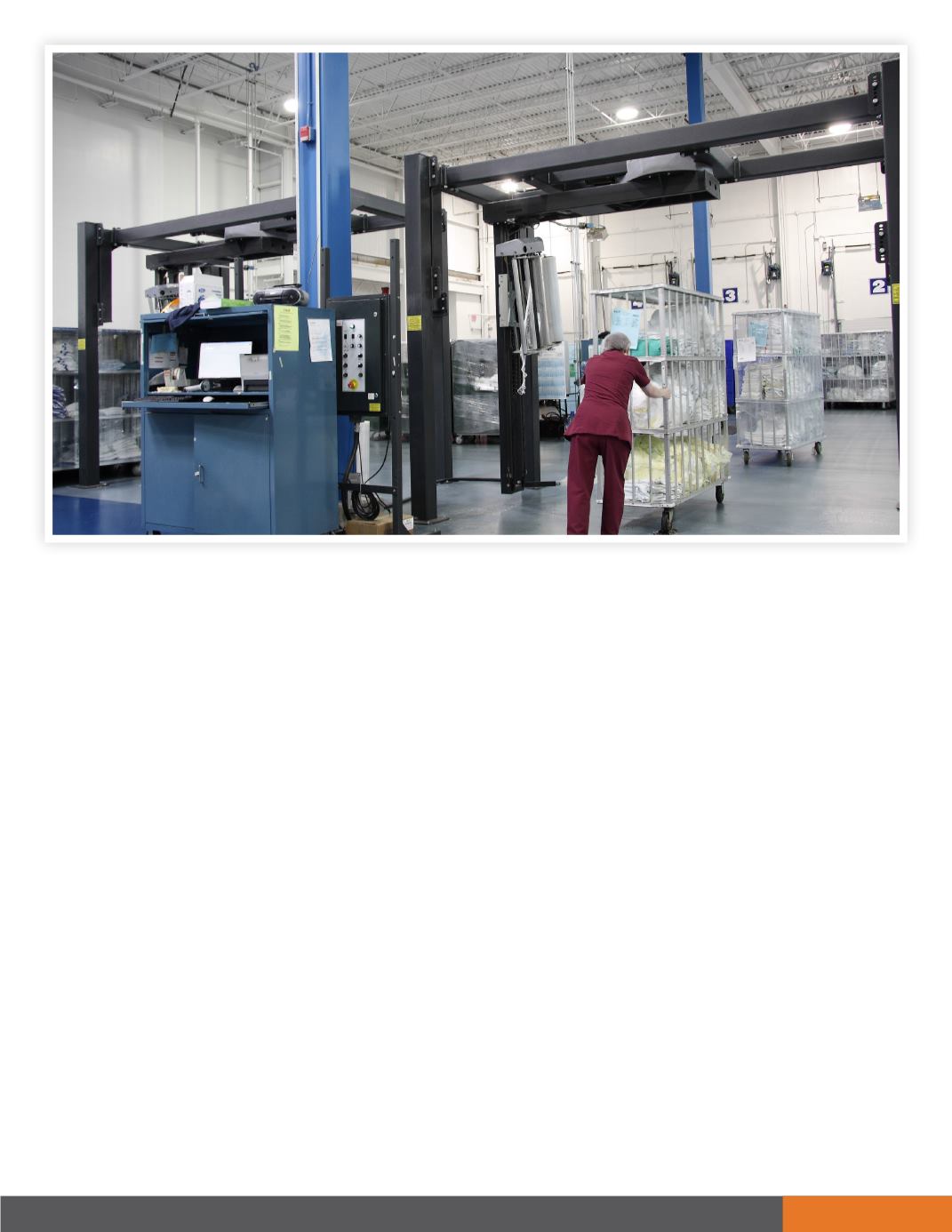
152 Business View - November 2015
owns its own linens (except for its hospitality clients) saves
its customers from having to constantly buy and replace
material; with a rental service, a customer has no capital
outlays or replacement costs - it only pays a certain, fixed
amount.
Another way that HLS saves its customers’ money can be
found in the efficiency of its state-of-the-art laundry equip-
ment, which allows the it to use a fraction of the energy
normally consumed by an on-premise laundry. Lastly, HLS
combines its water treatment and softening systems in or-
der to reduce the use of chemicals in the wash process,
cutting costs and increasing textile life.
Of course, as a centralized facility with over 100 custom-
ers, HLS must also employ a sophisticated computer
system to make sure that the appropriate quantities of
linen are being cleaned and sent out on a daily basis. Its
average order fill rate of 99.9 percent speaks well of the
company’s ability to meet its client’s critical needs, day-
in and day-out. “We’re deemed an essential service for a
hospital - like water and electricity,” explains Romeo. “So,
we’re an extremely customer-focused and quality-focused
company. And we’re extremely responsive; we make sure
that all of our processes are geared towards ensuring that
our customers get uninterrupted and high-quality service,
every day.”
Providing for the vital needs of its clients - without interrup-
tion - is a bedrock principle of every medical laundry ser-
vice. HLS meets that challenge with contingency planning
that relies on equipment redundancy. “The common types
of problems you’re going to run into in a laundry are equip-
ment breakdowns,” says Romeo. “We have five tunnel
washers, we have ten dryer lines, and we have five boilers.
So if one of them goes down, we’re still able to operate.
And if it is something major, we have back-up reciprocal
arrangements with other laundries within a three to five-
hour drive that could temporarily do our service.”
Romeo is bullish on the company’s future growth, as evi-
denced by what has already transpired over the last sev-
HEALTHCARE


